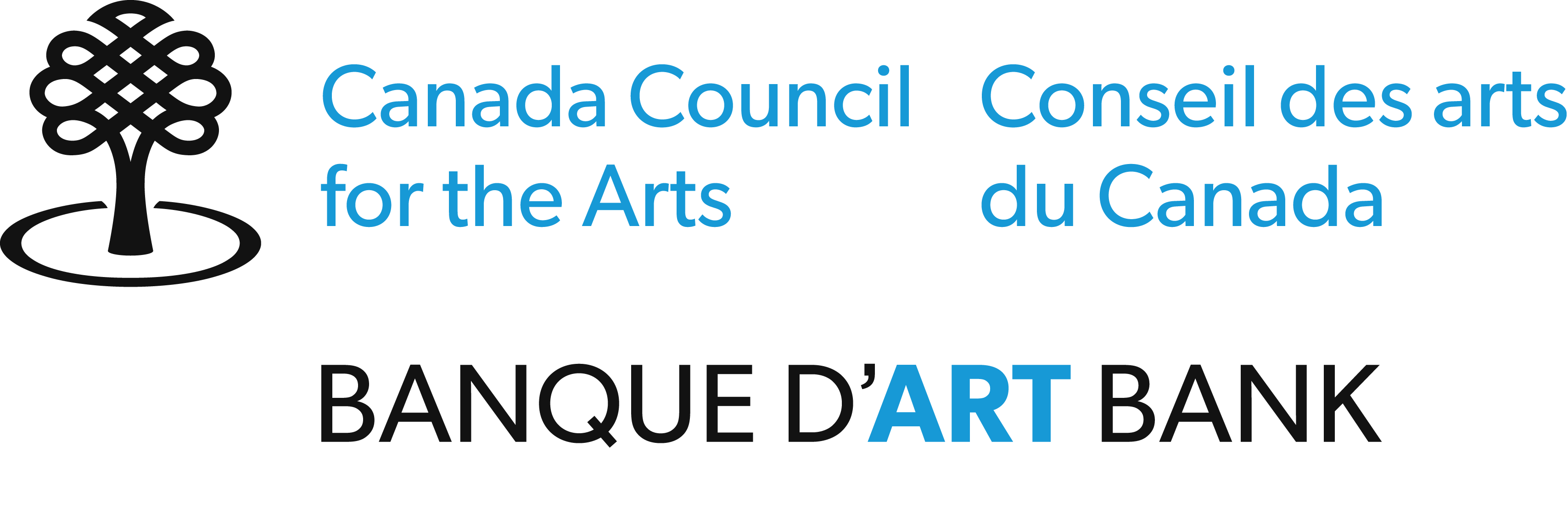2024 Exhibitions
2024 Exhibitions
Book Now
In Summary:
Weight We Carry | Kristy Janvier – Contemplates healing and explores how we carry so much while gracefully dancing through the transition to motherhood – balancing it all in our day-to-day existence.
Akiktonz’a S’ni | Jessie Jannuska – Utilizing beading, basket weaving, dreamcatcher technique, hide, and sinew to understand the intergenerational effects of the Residential Schools.
Unconscious Adaptations | Alana MacDougall
Reflecting on the vulnerability and temporal nature of our bodies and consciousness through abstract qualities of medical imaging, the exhibition explores the psychological impact of the familiar appearing foreign.
Northern Lights | Hugh Conacher
Using motion capture to document the evanescent beauty of a dancer’s movement through time. The image lingers, slowly fading away conveying the body’s momentum and elegance like the Northern Lights, dynamic displays of multicoloured luminosity
Stories We Tell / Des histoires à raconter | Canada Council Art Bank
Approaches storytelling as a part of our everyday lives and explores the different ways artists, whether from ancestors or through myths, experience and create stories, either re-telling history or recounting new stories from their own experience.
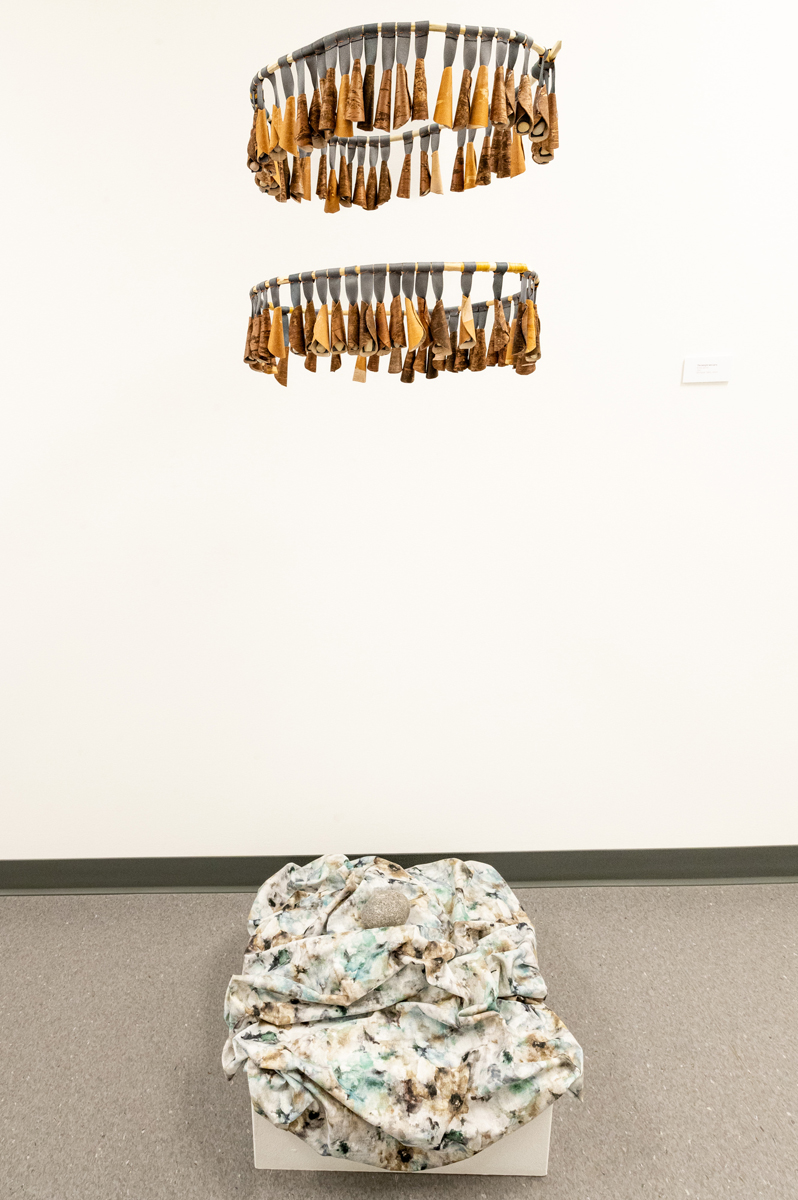
Weight We Carry | Kristy Janvier
number of works: 6
sculpture, wall work, video on IPads (travelling)
Contemplates healing and explores how we carry so much while gracefully dancing through the transition to motherhood – balancing it all in our day-to-day existence.
Kristy chose rocks for her performance artifact. Images of being weighed down by the rock, balancing the weight, and carrying the rock(s) become the symbolic representation of motherhood. We carry our babies on our breasts, our backs. Balancing it all in our day-to-day existence.
The landscape of her hometown of Flin Flon, MB is where the Canadian Shield and Boreal Forest meet. As she continues to contemplate the healing aspect as in her previous work, she is exploring how we carry so much while gracefully dancing through the transition to motherhood.
Items in the exhibit: “healing dress” (2 willow hoops (17×15.5 and 19×16.5), 100 birch bark cones, stones, ribbon, Imitation sinew, fabric, small stone;
“moss bag”, The Secondary item is the weighted moss bag. The moss bag is made of paper, a fragile material which will hold the sturdy rocks placed inside.
“flower rock”: beadwork on a photograph of rocks.
“Weight we Carry” Lastly, an iPad or projector with video of my movement exploration on a loop or if space does not accommodate this, photograph series images. If I am physically able to be at a location, I would like to offer a live performance.
Biography:
Kristy Janvier was born and raised in Flin Flon and is of Dene (English River First Nation) and has mixed European descent. At the age of 18, she began working overseas as a professional actress/dancer. After 15 years of working in the entertainment industry with Disney, Kristy returned to Canada relying on her presence/meditation practice to guide her work. She guides her work by structuring performances from personal stories incorporating images, installation, sound recording, and/or video with improvisation influence. In addition to her performance work, Kristy has been sewing beadwork since 2018.
Sales from her beadwork, Secret_Life_of_Beads, go towards funding her family’s bush cabin started in 1934 for future generations. Currently, she is working with the imgaiNorthern Project and Uptown Emporium as the Northern Champion Coordinator, connecting artists of all mediums in our small communities to support their practices or sell their work.
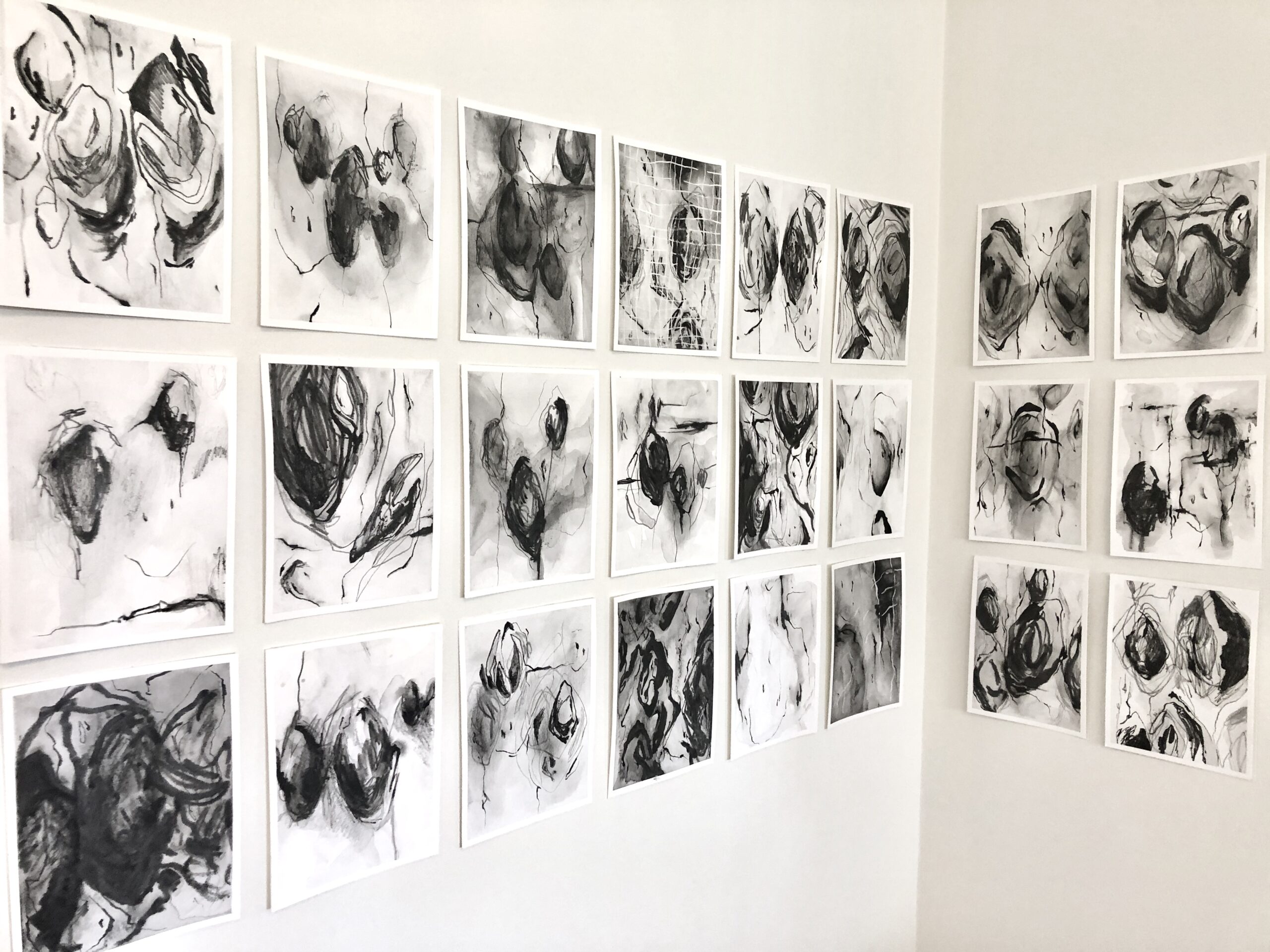
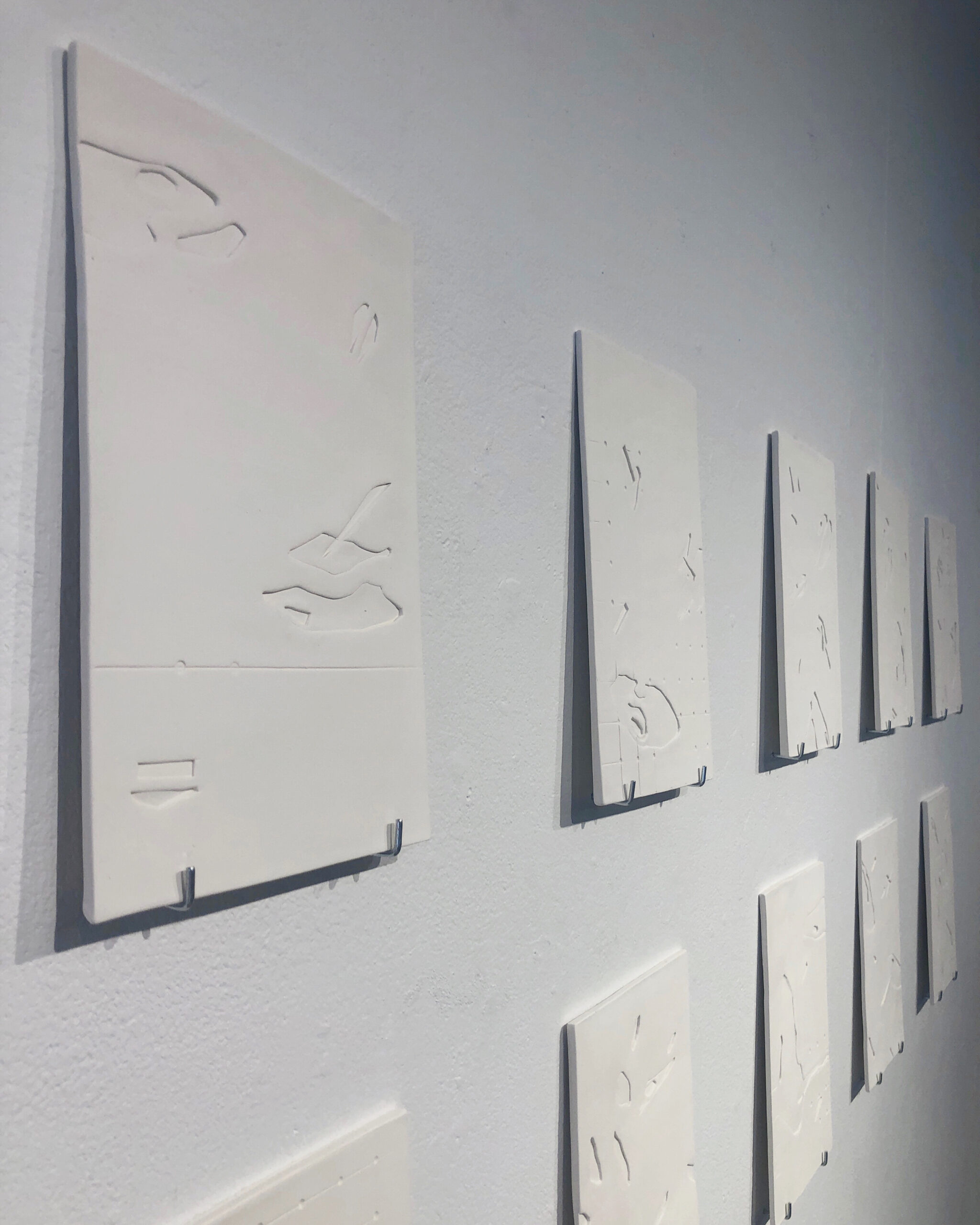
Unconscious Adaptations | Alana MacDougall
number of works: 20 drawings, 5 sculptures, 12 ceramic plates
Alana’s work draws on the abstract qualities of medical imaging and the psychological impact of the familiar appearing foreign. Layered drawings and sculpted forms with multiple associations explore the unnerving nature of the unknown and our instinct to find reflections in objects and images. Reflecting on the vulnerability and temporal nature of our bodies and consciousness, the work incorporates fragile material, finite movement, and forms with manifold meanings.
Biography: Alana holds a Bachelor of Fine Art (Honours) from the University of Manitoba and a Master of Fine Art from the Pratt Institute in Brooklyn, New York. She is a multi-disciplinary artist working primarily in drawing and sculpture. She has an active exhibition record and shows in Canada, the United States, and abroad. Her work has earned her several awards, and the Winnipeg Arts Council and the Manitoba Arts Council have recently awarded her production grants.. Alana has taught as a sessional instructor at the University of Manitoba since 2018.
Northern Lights | Hugh Conacher
exhibit details: 5 photographic prints, all 30″high and of varying lengths

In this series, I document a journey through time and in movement. I integrate light with live performance and hold the evanescent beauty of dancers’ movements through space, conveying the body’s momentum and elegance.
I’ve been photographing dancers and my work in dance for years. As beautiful as those momentary captures are, I’ve often felt that they don’t convey the sensation of movement or emotion in a way that tells the whole story. So, I asked myself, how could I challenge the viewer’s concept of time and question how dance relates to the world around us.
When I see a body move through theatrical space, it leaves a trail in my mind’s eye; the image lingers with dynamic displays of multicoloured luminosity, then slowly fades away. How do I capture stories in the moving body in the same way that I capture them in the natural world? Northern Lights uses dance to draw parallels from the natural world around us. The result is reminiscent of moving water or the Northern Lights.
practical Information:
Remove, and separate the velcro. Remove the piece on the wall by gently peeling it off the wall. The heat from a hair dryer will ensure ease of removal from the wall. The Velcro on the art should remain.
sizes:
MotionCapture1 2020 30” x 240” Archival Digital Print
MotionCapture2 2020 30” x 144” Archival Digital Print
MotionCapture3 2020 30” x 96.5” Archival Digital Print
MotionCapture4 2020 30” x 186” Archival Digital Print
MotionCapture5 2023 30”x120″ Archival Digital Print
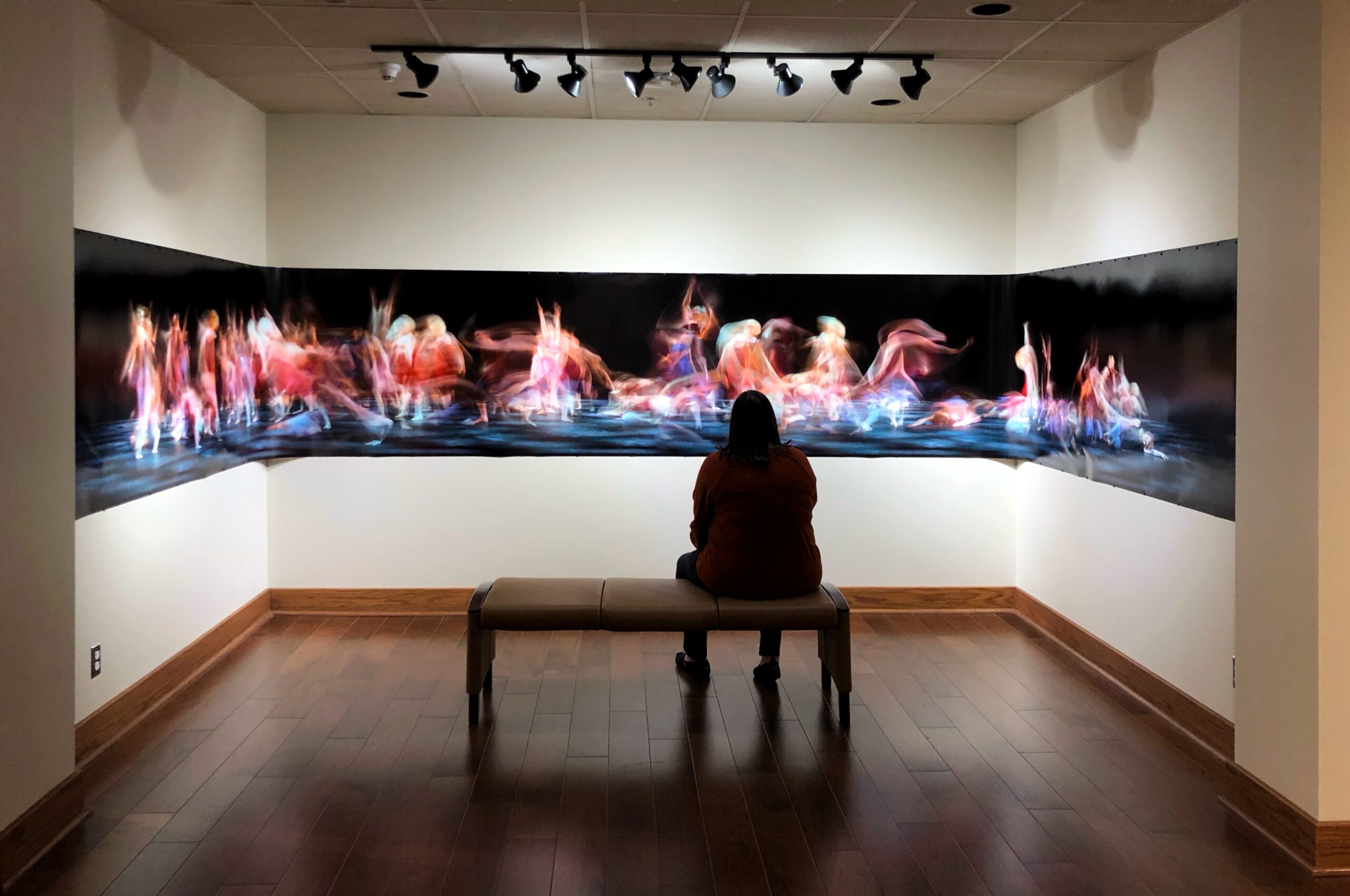
Northern Lights – Hugh Conacher
Biography
Hugh Conacher is a lighting and multi-media designer, and a photographer, whose practice is based in live performance. He has collaborated with musicians, choreographers, directors, visual artists, and dance and theatre companies throughout Canada and around the world. His multi-disciplinary process straddles the worlds of lighting design, new media technologies, projection and photography, blurring the lines between disciplines, using whichever media form best serves the vision of his current project.
Hugh’s love of photography and extreme climates has taken him from the Arctic to the Antarctic in order to capture the changing beauty of these unique landscapes. His photographic work resides in private collections and has been published worldwide.
Hugh has been a member of the Associated Designers of Canada since 1982 and is a member of l’Association des professionnels des arts de la scène du Québec.
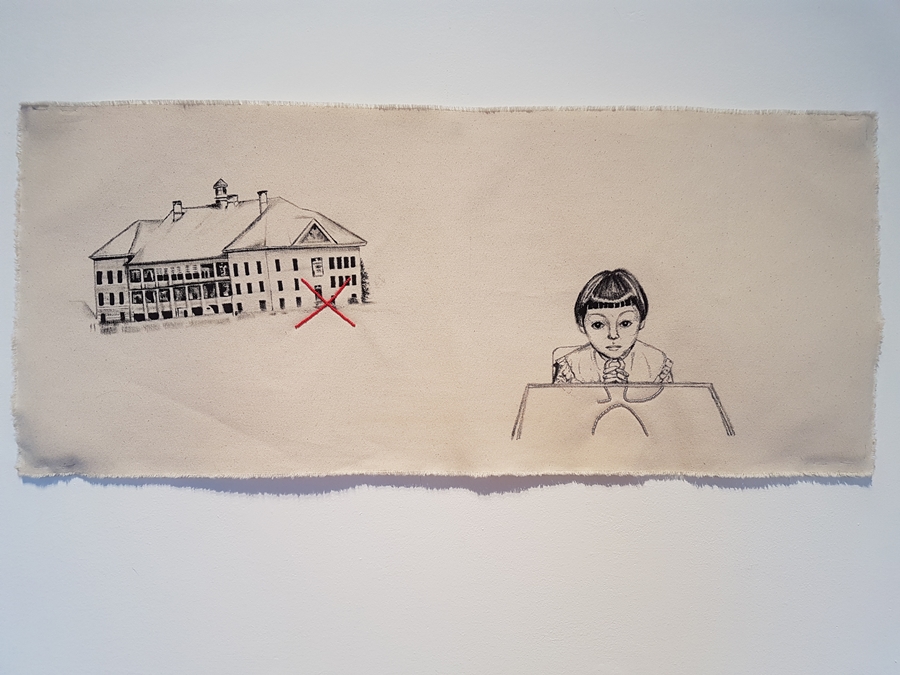
Akiktonz’a S’ni | Jessie Jannuska
Dakota: not forgotten
number of works: 13; 12 wall works, 1 sculpture
Largest painting is 48″x28″, second largest is 40″ x 28″.
Akiktonz’a S’ni utilizes beading, dreamcatcher technique, hide, and sinew to understand the intergenerational effects of the Residential Schools. Jessie Jannuska’s ancestry is mixed Dakota, Ojibway, and settler. She was raised in an environment affected by the intergenerational effects of Residential Schools. As an artist, she is interested in understanding how this trauma shapes relationships in her family. Akiktonz’a S’ni addresses the experience of poverty, addiction, and loss of Indigenous culture. Residential Schools were in operation in Canada for over one hundred years. Residential Schools have been operating in her family for her entire life.
This media was traditional to Indigenous peoples and had a ten thousand-year history on this land. The tactile quality of these materials offers a history to her work. Many of these techniques were learned from Jannuska’s elders and knowledge keepers. Jessie is grateful to these elders and knowledge keepers who have helped her create and understand this work – Barb Blind, Julia Brandon, Frank Tacan, Roberta MacKinnon and her grandfather Mervin Demas. That act of visiting an elder or knowledge keeper continues to be important to her practice.
Exhibition title: Akiktonz’a S’ni
-means ‘Not Forgotten’ in Dakota.
Artist Biography: Jessie Jannuska is a Winnipeg-based interdisciplinary visual artist with mixed Dakota, Ojibway, and settler ancestry. Her family is from Canupawakpa Dakota First Nation. She completed her Bachelor of Fine Arts degree with honours from Brandon University in 2018. Jannuska primarily works in oil, acrylic, watercolour, pencil, pen, mixed media, beading, and murals. She has had eight solo exhibitions and participated in over thirty group exhibitions. Her work can be found in the Provincial Art Collection of Manitoba. Jannuska teaches freelance art workshops in beading, dreamcatchers, painting, drawing, and sweetgrass baskets across Manitoba. Her most prominent awards include the CCA Research and Creation grant and the MAC Arts Leader Grant.
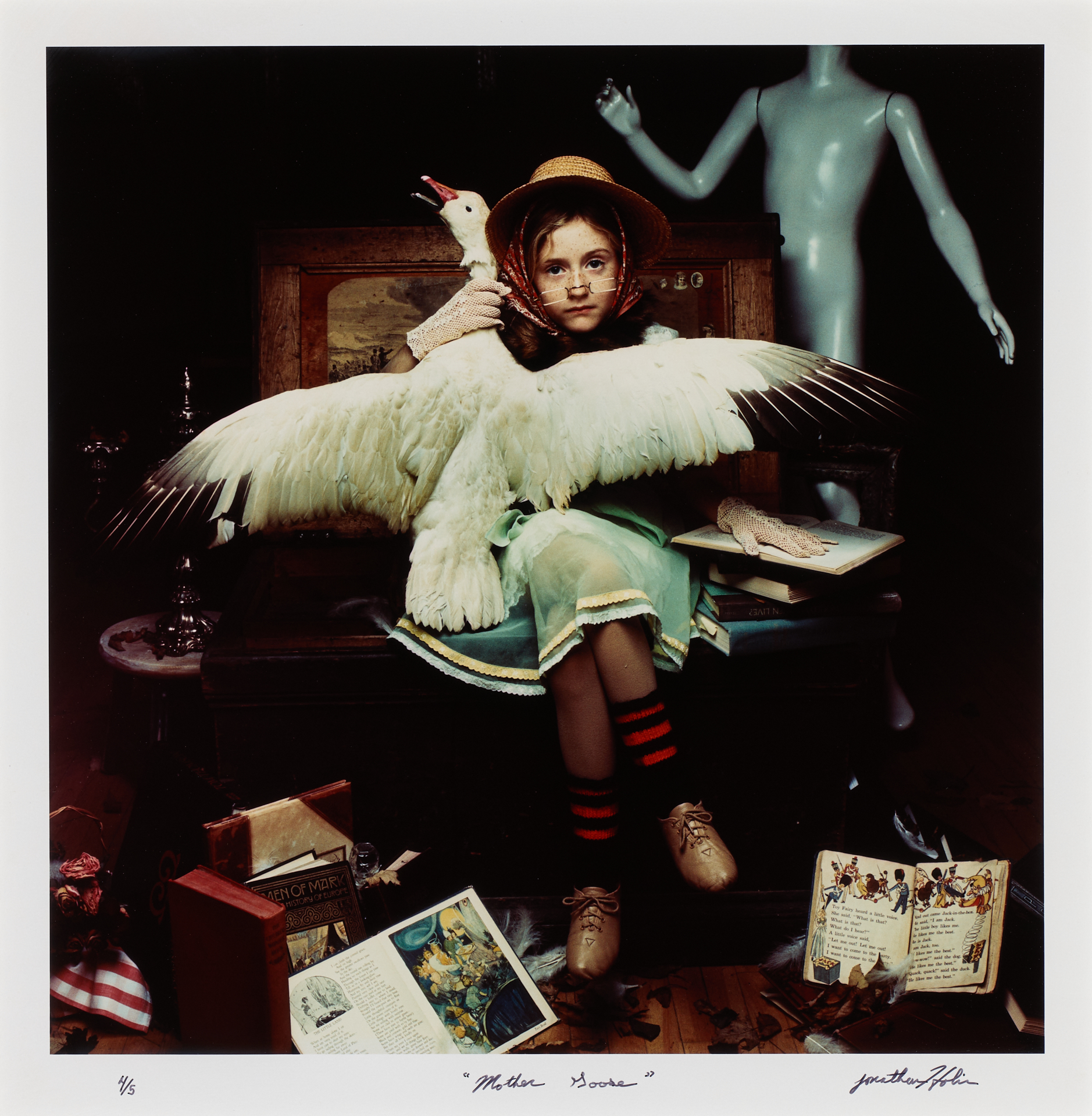
Stories We Tell
number of works: 16
Stories We Tell approaches storytelling as a part of our everyday lives — the stories created when we listen, learn from, and share our history and culture, both personal and collective, with friends and relatives. The desire to share stories is part of human nature, and this exhibition explores the different ways artists, whether from ancestors or through myths, experience and create stories, either re-telling history or recounting new stories from their own experience.
Stories We Tell features artworks from the Canada Council Art Bank collection by artists from diverse communities across the country and highlights the importance of interactions with different stories to build our own.
About the Curator
Taylor Simard is a practicum student from Carleton University where she studies humanities and art history. She has conducted research on re-telling stories through a postcolonial lens and continues to explore these themes through this exhibition.
About the Art Bank
Since 1972, the Canada Council Art Bank makes contemporary artwork available to a wide public across the country through three programs: corporate art rental, loans to museums, and outreach. With more than 17,000 artworks by over 3,000 artists, the Art Bank has the largest collection of contemporary Canadian art anywhere. It houses paintings, sculptures, drawings, photographs and prints by emerging and established artists, including a significant number of Indigenous artworks.
Des histoires à raconter
Nombre d’œuvres d’art : 16
Des histoires à raconter envisage la mise en récit comme faisant partie intégrante de notre quotidien, que l’on pense aux histoires créées lorsque nous apprenons sur notre culture et notre héritage individuels et collectifs ou à la manière dont nous les transmettons à nos proches. Le désir de partager nos histoires fait partie de la nature humaine. Cette exposition explore les différentes manières dont les artistes vivent et créent leurs histoires, que ce soit en transmettant des histoires fondées sur des récits ancestraux ou sur des mythes, ou en en racontant de nouvelles qui sont tirées de leur propre vécu.
Des histoires à raconter présente des œuvres de la collection de la Banque d’art du Conseil des arts créées par des artistes de partout au pays. L’exposition met de l’avant l’importance que revêtent les interactions avec différentes histoires dans la construction de la nôtre.
La commissaire
Taylor Simard est une stagiaire qui étudie les sciences humaines et l’histoire de l’art à l’Université Carleton. Cette exposition s’inscrit dans la suite d’une exploration amorcée avec ses recherches sur la transmission d’histoires dans un cadre postcolonial.
La Banque d’art
Depuis 1972, la Banque d’art du Conseil des arts rend l’art contemporain accessible à un large public d’un bout à l’autre du pays par l’entremise de ses trois programmes : la location institutionnelle d’œuvres d’art, les prêts à des musées et le rayonnement. Avec plus de 17 000 œuvres de plus de 3 000 artistes, la Banque d’art compte la plus importante collection d’art canadien contemporain au monde. Elle comprend des peintures, des sculptures, des dessins, des photographies et des estampes d’artistes en émergence ou à la carrière établie, dont un grand nombre d’œuvres d’artistes autochtones.
